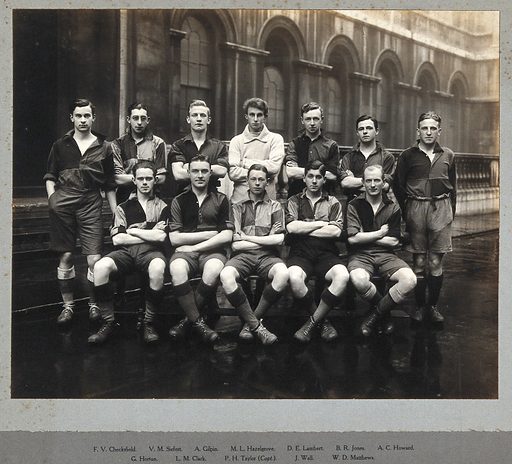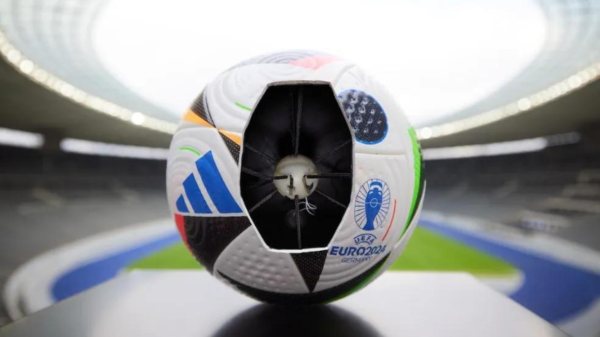London. An ever-changing city that does not for one minute stand still. A place of constant flux, and its footballing history is no different. With more professional clubs than any other city on earth, our very own London Town is undoubtedly a footballing behemoth. Intense rivalries, controversial stadium moves, and a whole host of silverware, we’ve got it covered. This is a history of London football.
After a series of meetings in 1863, the world’s first Football Association was established at the Freemason’s Tavern in Covent Garden. During these meetings, the game’s laws were devised. The first match took place shortly after, with Barnes and Richmond entertaining each other with a goalless draw. The world’s first cup competition, the FA Cup, was later established for the 1871-72 season, with a London club as the inaugural winners.
And there’s a fair chance you’ve never heard of them. Wanderers Football Club from Leytonstone in East London won the world’s first cup competition for the first time. But this was merely the beginning. Remarkably, the club would go on to win another 4 titles in the next 5 years, meaning that the club’s 5 FA Cup titles, to this day remains a greater FA Cup trophy haul than Leeds United, Nottingham Forest, and Leicester City’s combined. Despite the club dissolving in 1887, the club has lifted the FA Cup as many times as Everton have in their entire 143-year history.
But it’s Fulham of today’s most recognisable clubs that first formed in the capital (even though GKT deservedly like to have their claim), in 1879. Crystal Palace often stake a claim to this title, as there was in fact a team playing at the Crystal Palace building in 1864, though it remains unclear that this was Crystal Palace as we today know them. Remarkably though, King’s College London’s very own Guy’s Hospital Football Club has a contested claim to being the oldest football club not just in London, but the world, with a foundation date of 1843. The remainder of the 19th century saw a variety of clubs from all over the capital start to spring up, with teams such as Leyton Orient, Tottenham Hotspur, Queens Park Rangers, Arsenal, Millwall, Barnet, Brentford, West Ham United, and Wimbledon all able to trace their origins to the latter part of the century.
Of today’s London elite, it’s Tottenham who were the first to get their hands on major silverware. Spurs won the FA Cup for the first time in 1901, remarkably doing so as a non-league club – the first and only club to have ever achieved such a feat. It’s hard to believe I know, but that wasn’t actually the last time Spurs won a trophy. A few years down the line though, and a few more of London’s finest entered the fray. Charlton Athletic, Chelsea, and Crystal Palace were all established in 1905, providing the capital with an incredibly diverse set of clubs from all corners of the city. Each with their own unique identity representing their different stomping grounds, intense rivalries were formed. London football was now well and truly on its way.
Though, whilst we’re on the topic of London’s footballing history, there’s another club, defiantly amateur in nature, who unquestionably deserve a mention. Corinthian FC. The club no longer exists in its original state, having merged with Casuals FC to form Corinthian Casuals, currently playing in the 7th division of English football. In its early days in the late 19th century, the club provided a number of the first set of England internationals. For two England matches against Wales in 1894 and 1895, the club provided all 11 England starters of each game – a feat achieved by no other club before or since. To this day, the club have given the England national team 74 players, the second-highest of any English club, second only to fellow Londoners Tottenham – is it really any surprise that England haven’t won much? Corinthian also provided international football’s first black player, Andrew Watson. Born in Guyana, he would go on to win 3 caps for Scotland between 1881 and 1882. But Corinthians’ legacy doesn’t stop there.
During a tour of Brazil in 1910, the club inspired a group of Sao Paulo railway workers, who simply happened to be watching one of their games, to form their own local football club. 7 Brazilian titles, 3 Brazilian Cups, 30 Sao Paulo state championships, 2 Copa Libertadores, and 2 FIFA Club World Cups later, the club have become not only one of the biggest clubs in Brazil, but one of the most recognisable in the history of the world game – Corinthians. Real Madrid are also said to have taken their famous white strip from Corinthian’s club colours. Not bad for a bunch of amateurs, eh?
Controversial stadium moves are something we’ve become all too familiar with, mostly due to rogue owners or the falsifying allure of becoming a bigger club. But the first instance of a London club moving home was a rather extreme one to say the least. In 1913, Arsenal left their home in Woolwich, but instead of moving down the road, the club decided to move to a different part of London entirely, utterly flummoxing their local supporter base. By making the move north to the beloved Highbury, the club found itself within 5 miles of neighbours Tottenham Hotspur. And thus, the North London derby was born. The space vacated by Arsenal gave Charlton the space to grow into South East London’s leading club, with the club turning professional in 1920, and achieving Football League status just one year later in 1921.
The 1920s also saw a change in FA Cup final location. Having previously been played at the Crystal Palace grounds south of the river, the FA Cup final moved north, to Wembley, where it has of course been played ever since (with a few exceptions). The first Wembley Cup Final took place in 1923, and a certain West Ham United from East London were there. West Ham lost the match, and three months later also became the first English club to lose to foreign opposition on home soil. Hakoah Vienna arrived on English shores from the Austrian capital as one of the leading Jewish sports clubs in the world, and politely dismantled their opponents 5-0 at the Boleyn Ground.
The end of the decade is where Arsenal emerged as London’s leading club, kickstarting a fine century for the Gunners, which would see them become the most successful in the capital. The 1930s firmly belonged to Arsenal, dominating not just in London, but in England, winning 5 league titles and two FA Cups in that decade alone. The first of those two titles, as well as the first FA Cup, were achieved under the stewardship of the great Herbert Chapman, often referred to as a pioneer of the modern style of management. Introducing a variety of never-seen-before tactics (the iconic W-M), training techniques, and physiotherapy, he quickly became one of the most sought-after coaches in football, with Arsenal having undoubtedly capitalised. He was also one of the first within the game to call for the use of floodlighting at stadia, as well as numbers on the backs of shirts, sealing his legacy as one of the game’s all-time great innovators.
By the time of the outbreak of the Second World War, West Ham, Charlton, Brentford, Chelsea and Arsenal had all become First Division regulars. During the wartime hiatus, understandably, no competitive football was played on a national level. Though, regional league and cup competitions were set up and were played throughout the war until 1945. After the full resumption, Charlton Athletic reached back-to-back FA Cup finals, winning in 1947 – their only major trophy to date, but fell short a year later. Arsenal simply picked up from where they left off, adding yet another topflight title to their growing collection in 1948. That same season saw Brentford relegated, never to return for another 74 years. Tottenham Hotspur won their first league title in 1951, with Arsenal winning it again two years later. The hierarchy of London clubs as we know it, was starting to take shape.
Football in London was booming, and not just within the club game. In 1953, the game billed as ‘the match of the century’ came to Wembley. The wonderful Hungarian side, often referred to as the Magnificent Magyars, arrived in London with a star-studded line-up featuring some of the all-time greats such as Ferenc Puskás. England had never lost to continental opposition, with their only home defeat up to this point surprisingly coming at the hands of the Irish FA (Republic) in 1949. The ‘match of the century’ tag came about with the originators of the game coming up against the finest of the time. England lost 6-3. The embarrassing defeat came to represent a seminal moment for the Three Lions. The English footballing establishment had been heavily criticised for its stark complacency and wanton insularity, highlighting the need for England to be more forward thinking if they were to keep up with their continental counterparts. Despite England’s finest moment coming just 13 years later, this game would go on to mark the beginning of a very painful century for the English.
Into the swinging sixties, and Tottenham became the first English club to win the league and cup double, doing so under the great Bill Nicholson in 1961. Non-League Tooting and Mitcham United surprised everyone in 1964, reaching the quarter-finals of the FA Cup, representing one of the great non-league runs in the competition’s history. But it’s that same year that West Ham United finally got their hands on some silverware, 41 years after losing the first Wembley cup final. Beating Preston North End 4-2 in the final, the iconic Bobby Moore lifted the trophy aloft. The 1960s would go on to become a golden era for West Ham, with the club winning the European Cup Winners’ Cup a year later, beating 1860 Munich in the final at Wembley. But that wasn’t it. Just one year later, West Ham would win the greatest trophy of them all: the World Cup.
In 1966, London hosted its first, and so far only, FIFA World Cup Final, and of course, England were there. Famously beating West Germany 4-2 on a glorious summer’s day at Wembley, England lifted the Jules Rimet trophy, just thirteen years after being humbled by the Magical Magyars. And with that, West Ham became the first club side in football history to win the World Cup. Well, three of England’s heroes that day were West Ham players: Geoff Hurst, Martin Peters (the two goalscorers), and Bobby Moore (captain). It remains a captivating story that three lads, all from a similar part of East London, would forever write their names in footballing folklore.
After the comedown of the nation’s footballing euphoria, QPR surprised everyone with a successful League Cup campaign in 1967, winning the trophy remarkably as a Third Division side – something only three other clubs have managed. 1967 also featured the first all-London FA Cup Final, with Tottenham and Chelsea meeting at the famous twin towers. Spurs won the game 2-1, adding yet another trophy to their cabinet.West Ham won the FA Cup once more in 1975, in another all-London FA Cup final, this time beating Fulham, who were ironically captained by West Ham legend Bobby Moore that day. A third FA Cup came for the Hammers five years later in 1980, beating Arsenal in the final in yet another all-London affair. High-flying Arsenal were huge favourites going into the game, with West Ham playing their football that season in the Second Division. West Ham’s famous win that day remains the last time a club from outside the top division won the FA Cup.
The 1980s would of course end up being the final decade of England’s old First Division, before the advent of the Premier League era. Tottenham kicked off their decade in style with back-to-back FA Cup wins in 1981 and 1982, beating QPR in the latter in what would be their first and only FA Cup final appearance to date. West Ham achieved their highest-ever league finish of 3rd in 1986, and that very same year saw Wimbledon promoted to the First Division for the very first time, despite being a non-league club only 10 years prior. To emphasise Wimbledon’s meteoric rise, the club extraordinarily won the FA Cup in 1988. That famous team, dubbed ‘The Crazy Gang’ for their off-field antics, pulled off one of the great FA Cup shocks beating Liverpool 1-0 in the final. The mighty Millwall, often referred to as the world’s biggest small club, also reached the First Division for the first time in 1988, only to be relegated two years later, never to return. Arsenal won yet more titles in 1989 and 1991, but perhaps most importantly of all, Crystal Palace in 1991 won the Zenith Data Systems Cup, just one year after losing the FA Cup final. “Zenith Data Systems Cup Winners, you’ll never sing that” – that’s because the meagre competition was discontinued the following year. A successful year for London clubs was capped off at the end of the year. Tottenham won another FA Cup, before the trophies for the North London outfit would begin to dry up.
And thus, the new era was born. The Premier League was founded in 1992, with Arsenal leading the way for London clubs. Arsenal won the title in 1998, with the ‘invincibles’ repeating the feat in the 2001-02 season, going even better with an entire season unbeaten – something no other team to date has achieved (in the Premier League era). Chelsea won the FA Cup at the old Wembley in 2000, the last ever final at the great ground, beating Aston Villa 1-0. In 2003, Arsenal won yet another Premier League title, this time winning it at the home of their arch-rivals, at White Hart Lane, or rather, ‘Three Point Lane’ as it’s become jokingly referred to.
Amidst the booming financial power of those fortunate enough to find themselves in the Premier League, life was not so good for all London clubs after the turn of the millennium. Thanks to a dilapidated home ground and a rogue owner, Wimbledon FC moved 46 miles out of town to Milton Keynes in Buckinghamshire, controversially becoming MK Dons. Following in the footsteps of Woolwich Arsenal almost 100 years before, the club simply turns its back on its loyal supporter base, which understandably led to anger and frustration. As a result, instead of moving with the club, the fans stayed put in Wimbledon and founded a new club, AFC Wimbledon, in 2004. The club was forced to start all over again at the bottom of the English football league pyramid, though more importantly the club had its heart and soul back.
Millwall reached the FA Cup final in 2004, only to lose to Manchester United 4-0 in the final. Cristiano Ronaldo scored in that game, making him the only player in football history to have scored against all three of Iran, North Korea and Millwall.
Thanks to Roman Abramovich’s wallet, Chelsea won the Premier League for the first time in 2005, and completed back-to-back titles a year later. Arsenal became the first London club to reach the European Cup Final in 2006 but lose out to Barcelona in Paris despite having still led the game 1-0 with just fourteen minutes to go. Chelsea won the first FA Cup final under the famous arch of the new Wembley in 2007, and Spurs the League Cup a year later – the last time the club won a trophy. The Blues won the Premier League title once more in 2010, with West London neighbours Fulham surprisingly reaching the Europa League final that same year, having demolished Italian giants Juventus 4-1 along the way. The golden period for Chelsea continued, and two years later they became the first London club to win Europe’s greatest club prize, the European Cup (Champions League). Arsenal went on to win another three FA Cups in 2014, 2015, and 2017. Chelsea won the league again in 2015 and 2017.
In between those two Chelsea titles, West Ham bade an emotional farewell to the beloved Boleyn Ground in 2016, their home for 112 years, to move to the Olympic Stadium in Stratford. That same year, Palace lost yet another FA Cup final. Tottenham and Brentford too moved into new stadiums before the end of 2020, with Tottenham reaching their first Champions League, or European Cup final in 2019. Brentford were denied the chance to say goodbye to their beloved Griffin Park in person, due to the Covid pandemic onset.
As the pandemic hit, and games were played behind closed doors, Sutton United of South London, having spent their entire existence as an amateur club, won promotion to the Football League for the first time in their history in 2020, with Brentford finally ending their 74-year wait to return to the topflight a year later. Brentford’s opening day victory over Arsenal at the beginning of this current season, saw the Bees go top of the top division for the first time since 1935. Chelsea also gave London its second European Cup, beating Manchester City in the final.
And so, there we have it. London’s incredibly rich footballing history is clear to see, but what does the future hold? Will Chelsea move south of the river? Will West Ham and Millwall become best friends? Or will Leyton Orient win the Premier League? Probably not. But London will undoubtedly continue to be one of the biggest parts of English football’s furniture.














